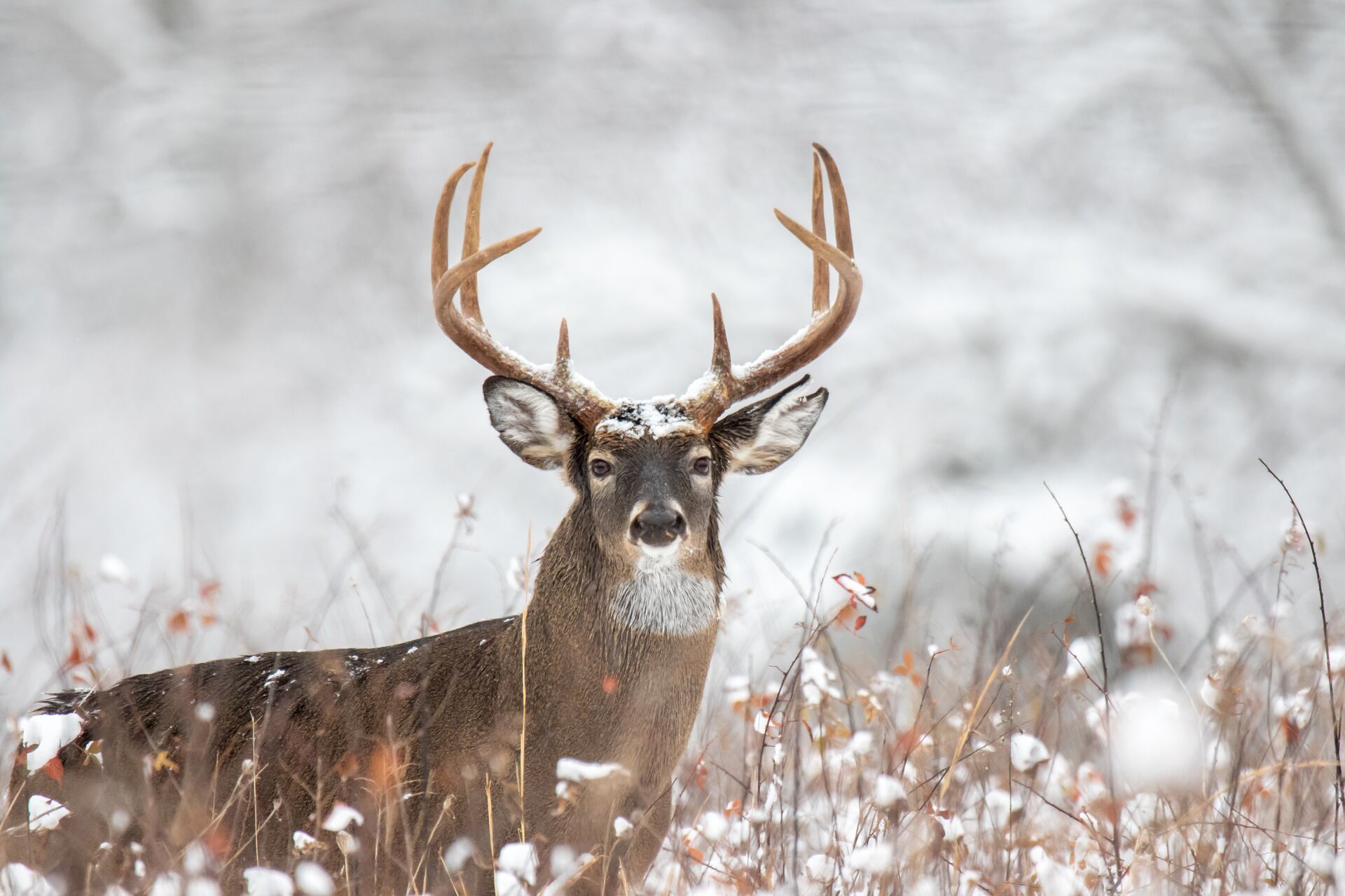
Hope for Bad Weather
Any remaining buck survivors are extremely wary at this point in the season. So, if you are hunting anywhere north, you better hope for bad weather.
Yes, although that may sound strange, the worse the weather, the more likely you are to see that big buck that made it through the rut.
At this late stage in the season, whitetail do not need to expose themselves unless they are forced to react when blizzards, subzero temps and gusty conditions swoop into a region. So, by understanding their reaction when the blizzard strikes, you're one step closer to success.
Know Where To Look
First and foremost, staying on top of the changing weather conditions during the time of year is very important.
For example, we Michiganders from HuntWise can experience about five inches of snow in mid-November. Then, after all the snow has melted, it can still be about 20 degrees outside.
Staying on top of these changing conditions is essential because whitetails are reading the weather patterns like meteorologists.
Start by planning your hunt just prior to an incoming winter storm or harsh conditions. If you're not sure you can trust the local weather person, the HuntWise app can help with local forecasting for up to 15-days for Elite users.
Depending on the storm's ferocity, you'll want to hunt hours before the storm and up to a day or more in advance. Big storms often provide many pre-storm feeding frenzies for the whitetail, and that is why the most important place to look is food locations.
Put Your Safety First
Nevertheless, remember that you might have to hole up like a deer during the storm. Don't risk your life if warnings or travel advisories are in effect.
However, if you can get out, consider hunting inside thick cover to possibly meet up with a buck browsing near protective bedrooms.
As we already noted, locating feeding sources will be the most crucial element of where to look during winter storms. Whitetail will flock to the best food sources, and carbs will have the greatest appeal because they create the most energy for them. Considering that these big bucks have lost 20-25% of their body mass, they will need energy to survive the winter conditions.
So, consider corn, soybeans, or grains when thinking about what whitetail would consume. Look at fields, both large and small, but focus on where the most significant numbers of deer are congregating. Occasionally, a buck might sidestep the crowds, but with the primary rut in the rearview mirror, bucks tend to stay close in case the action heats up via the secondary rut.
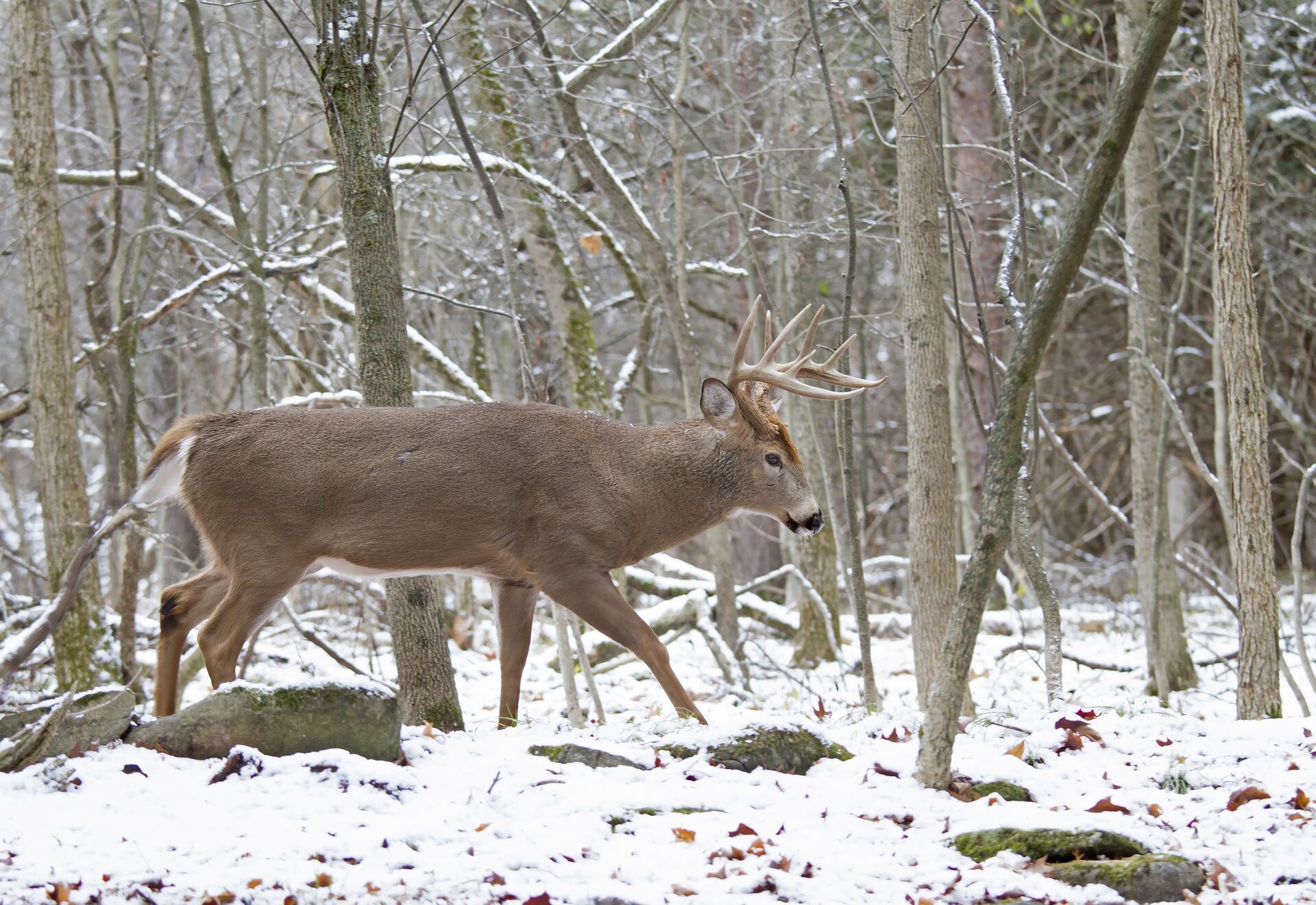
Know How To Harvest
Now that you know where to look for blizzard bucks, it is time that you execute the hunt by harvesting that buck on your trail cam. If conditions allow you to do so, an awesome time to hunt is to get out to the stand before the storm and try to endure the harsh conditions.
Remember: do not risk your life. However, if the weather allows you to be at your stand, try to be there for everything. You might catch deer on the move to store away some food before they go back and bed for the storm.
On the other hand, hunting right after a large winter storm can be just as rewarding in some cases. Imagine a big buck that has been forced into foodless shelter for several days or more. This can be a great time for activity and the chance to tag out during the late season.
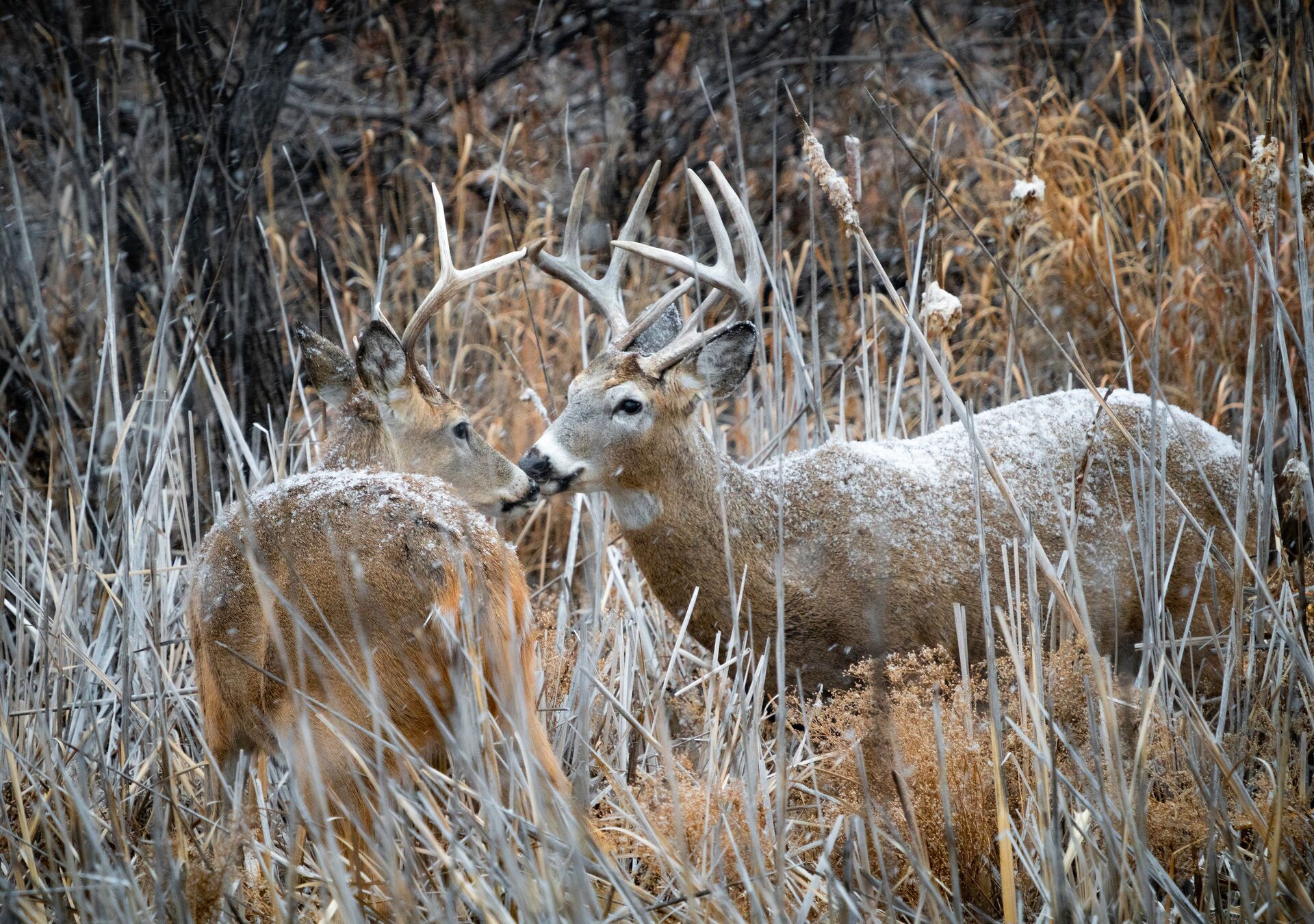
HuntWise Helps You Tag Out With Blizzard Bucks
In reality, for us hunters, any time is a great time to hunt. However, the late season gives us many different variables that we must take into account.
It is most important to stay on top of the weather and gauge how the current conditions will change deer activity and accessibility to food sources. Doing this will increase your chances of landing that big buck on your trail cam.
Remember to use HuntWise no matter when you hunt! The app can be especially helpful for tracking the weather and different animal behavior after the rut. HuntWise can also help you locate the best spot to post up and wait for a buck to come out of bedding in search of food.
If you don't have the app yet, download it today and start learning about its many features. Explore everything in the app – including 15 days of weather forecasting – free for a week!
Content updated June 17, 2024.

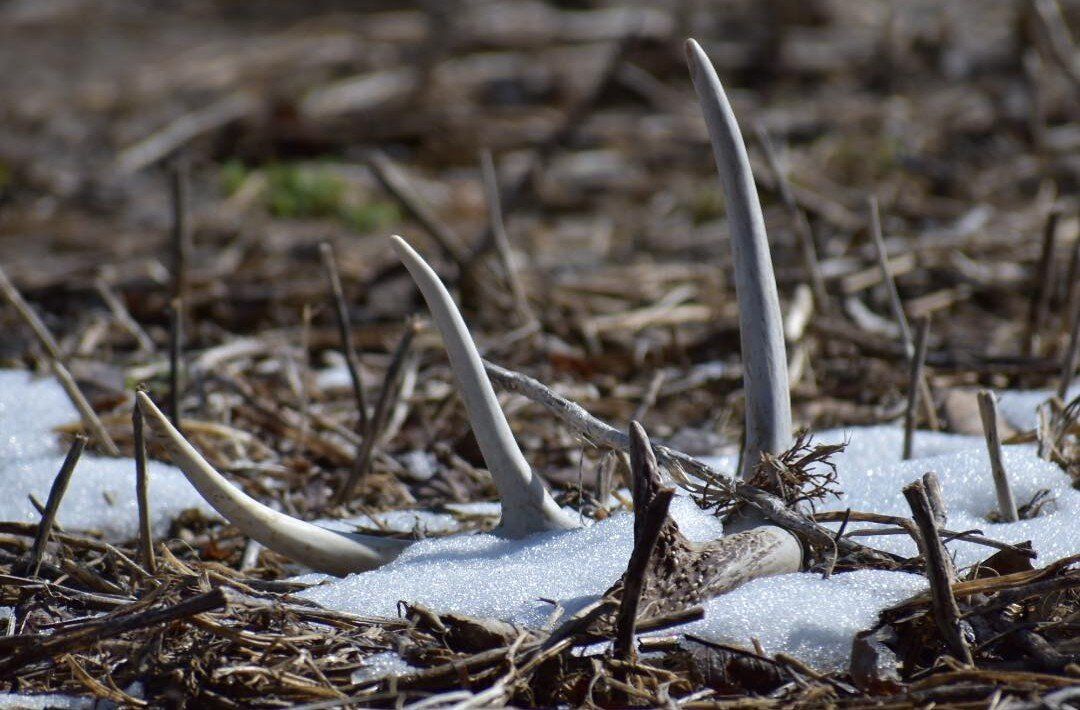 Hunting Tips
Hunting Tips Hunting Tips
Hunting Tips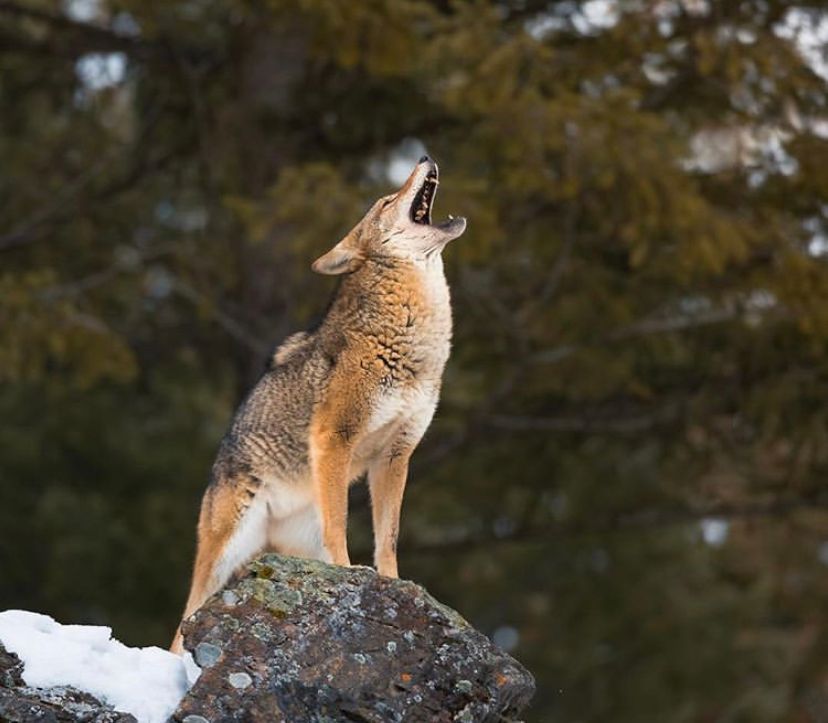 Hunting Tips
Hunting Tips

